What is this post about?
My EOS 20D is now 7 years old. I've been looking to get a full frame camera for a couple years. With the simultaneous introduction of the Canon EOS 5D Mark III and Nikon D800 it seems the time has finally come and I need to make up my mind.
My intention is rather simple, unlike the title could suggest, this is not going to be a comparative review of the two recently released full frame DSLR's. Unfortunately I don't have access to any of these cameras at this point in time. I'll be reading reviews, looking at posted images, download raw files and try to draw conclusions about the image quality based on these. Obviously, one will get no answers to the questions of handling and operation of the cameras this way.
I'll be looking at studio samples, CR2s and NEFs captured and published by dpreview.com (5D Mark III raw samples, D800 raw samples). For processing the raw files, Adobe Lightroom 4.1 RC was used at default settings except that sharpening and noise reduction were both set to 0 to fully uncover the capabilities of the imaging sensors. Files were exported as 16 bpc Tiff. JPEG's for the web were saved at maximum quality.
ISO 100 Samples
D800 sample uncropped & reduced. 85 mm, f/11, 1/15 s.
The D800 sample compared to the 5D is slightly underexposed (1/15 second vs. 1/13). Other than that the test samples don't reveal much at this size, so let's look at some details.
Details will be presented in screenshots from Photoshop, having the 5D and D800 samples side-by-side.
Resolving power
Detail 01, side-by-side with 5D on the left (click to view at full size):Moiré?
People in various forums tend to be concerned about moiré in D800 (especially the D800E). I've found examples of moiré in the 5D test sample, too.Detail 02, side-by-side with 5D on the left (click to view at full size):
Dynamic range
When DxOMark.com published their review of the D800 recently (here), many people in the photography community were rather surprised, how Nikon could pull this off with their 36 MP sensor packing photodiodes at such high density. I was surprised too, so when the raw studio samples were published, I was curious to do a comparison of shadow detail and noise.For this test I increased the mid-tone levels (Image->Adjustments->Levels) from 1.0 to 2.0.
Detail 03, side-by-side with 5D on the left (click to view at full size):
Another peek at this issue - detail 04, side-by-side with 5D on the left (click to view at full size):
ISO 6400 Samples
The situation is somewhat different at ISO 6400, where the D800 starts exhibiting somewhat more noise.Detail 05, side-by-side with 5D on the left (click to view at full size):
The same crop but with mid-tone levels increased from 1.0 to 2.0,
detail 06, side-by-side with 5D on the left (click to view at full size):
It's hard to call a winner here, but the noise pattern of the D800 looks a bit more pleasing to my eyes.
ISO 25600 Samples
Such high ISO sensitivity is generally considered to be favoring the 5D more. Why? ISO 25600 is still a native sensitivity for the 5D while with the D800 native stops at 6400, beyond that it's amplified. Let's have a look how the two shots compare.Detail 07, side-by-side with 5D on the left (click to view at full size):
Now with mid-tone levels pulled up to 2.0 - detail 08, side-by-side with 5D on the left (click to view at full size):
Again, the D800's margin is seriously weakened, but in my eyes the noise of the 5D is still more disturbing here.
At highest ISO
This is a territory where the Nikon D800 can't really compete - ISO 102400. While a direct comparison between different sensitivities does not make much sense, let's see what we get for the extra two stops.Detail 09, side-by-side with 5D (ISO 102400) on the left and the D800 (ISO 25600) on the right (click to view at full size):
Let's face it: ISO 102400 is not usable without reasonable noise reduction. So I turned NR back to the Lightroom default for the rest.
High ISO With NR
This is how it compares at ISO 25600 and NR on - detail 10 - side-by-side with 5D on the left (click to view at full size):NR managed to keep the noise patter under control but has some impact on color rendition.
There are no miracles at ISO 102400 - detail 11 - side-by-side with 5D on the left, D800 at ISO 25600 (click to view at full size):
It's become clear that usability of such high ISO for shots with deeper tones will require downsampling.
5D at ISO 102400, after reduction to 4" x 6", cropped (click to view at full size):
It's certainly possible to massage the high-ISO files even more to get smoother results. My conclusion is - being able to shoot at ISO 102400 with a prosumer camera is remarkable on its own, the question is, whether one needs to stretch out so far.
Sports & news photographers will be happy, but for my style of photography resolution and dynamic range are the critical aspects. And these are the areas where the D800 seems to shine. I'm still looking forward to see the D800E production samples.
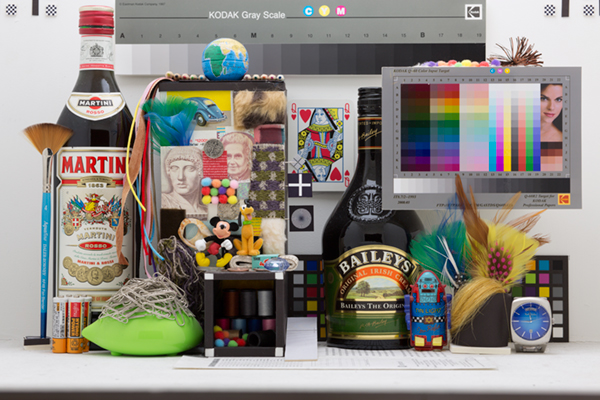

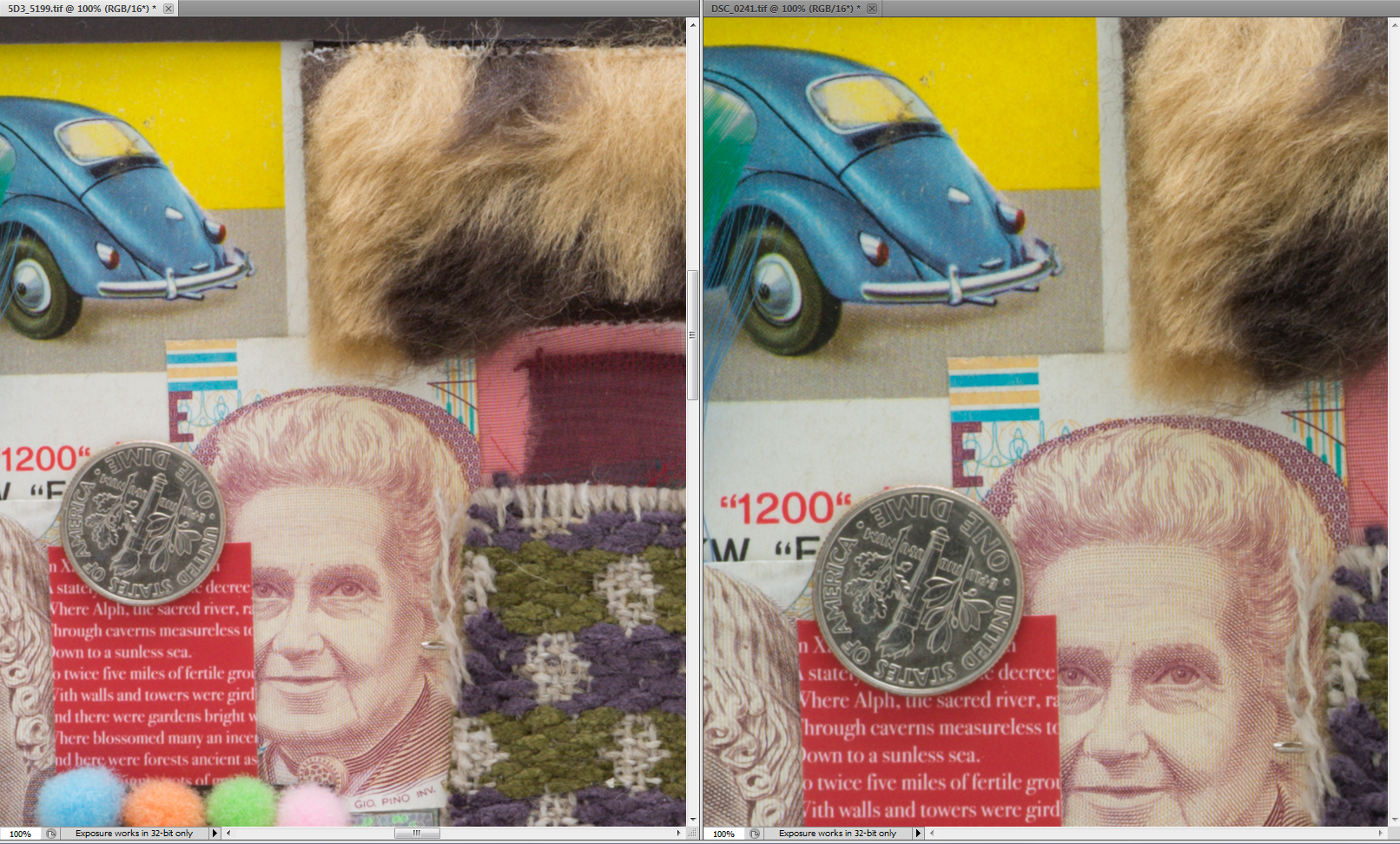

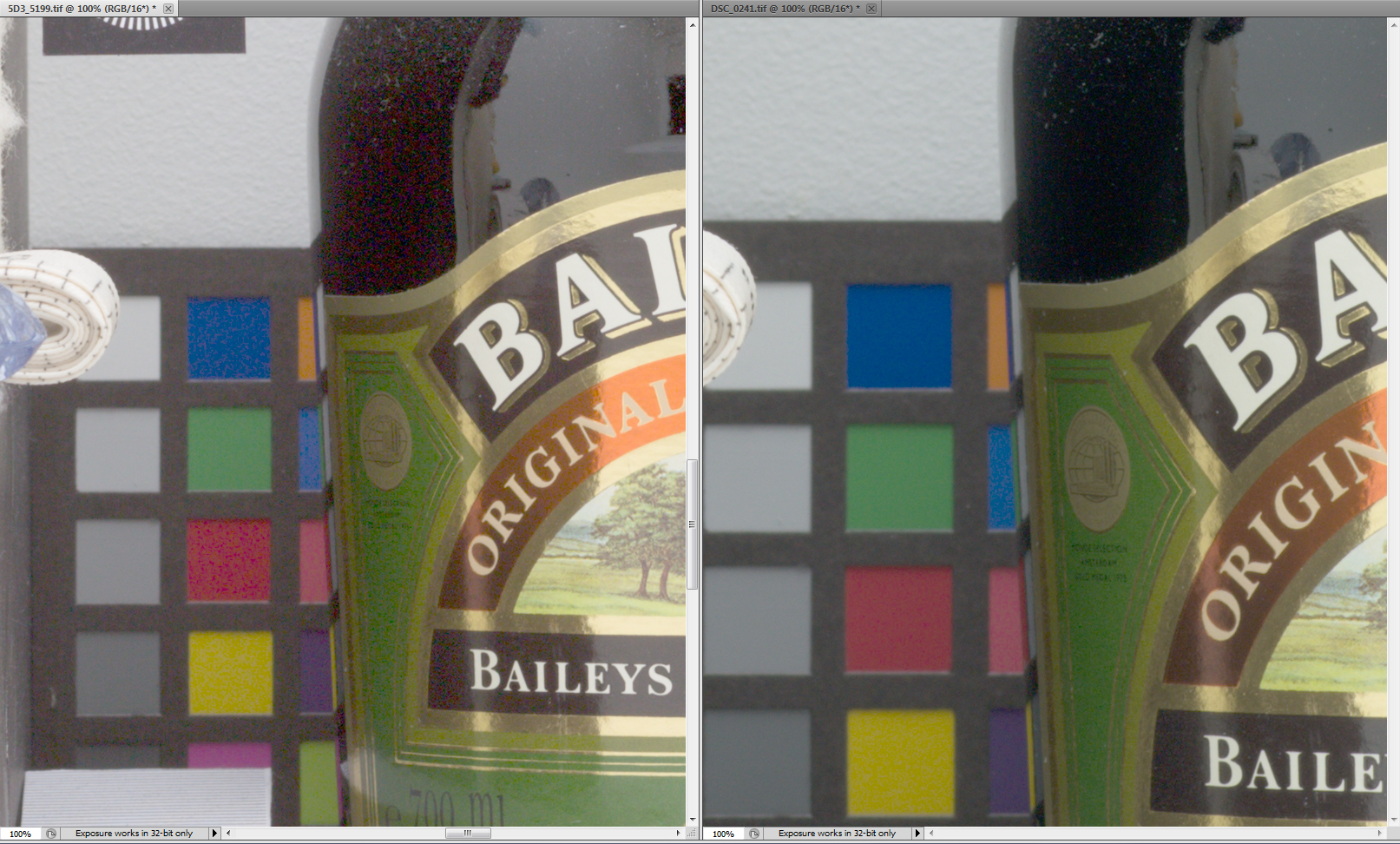

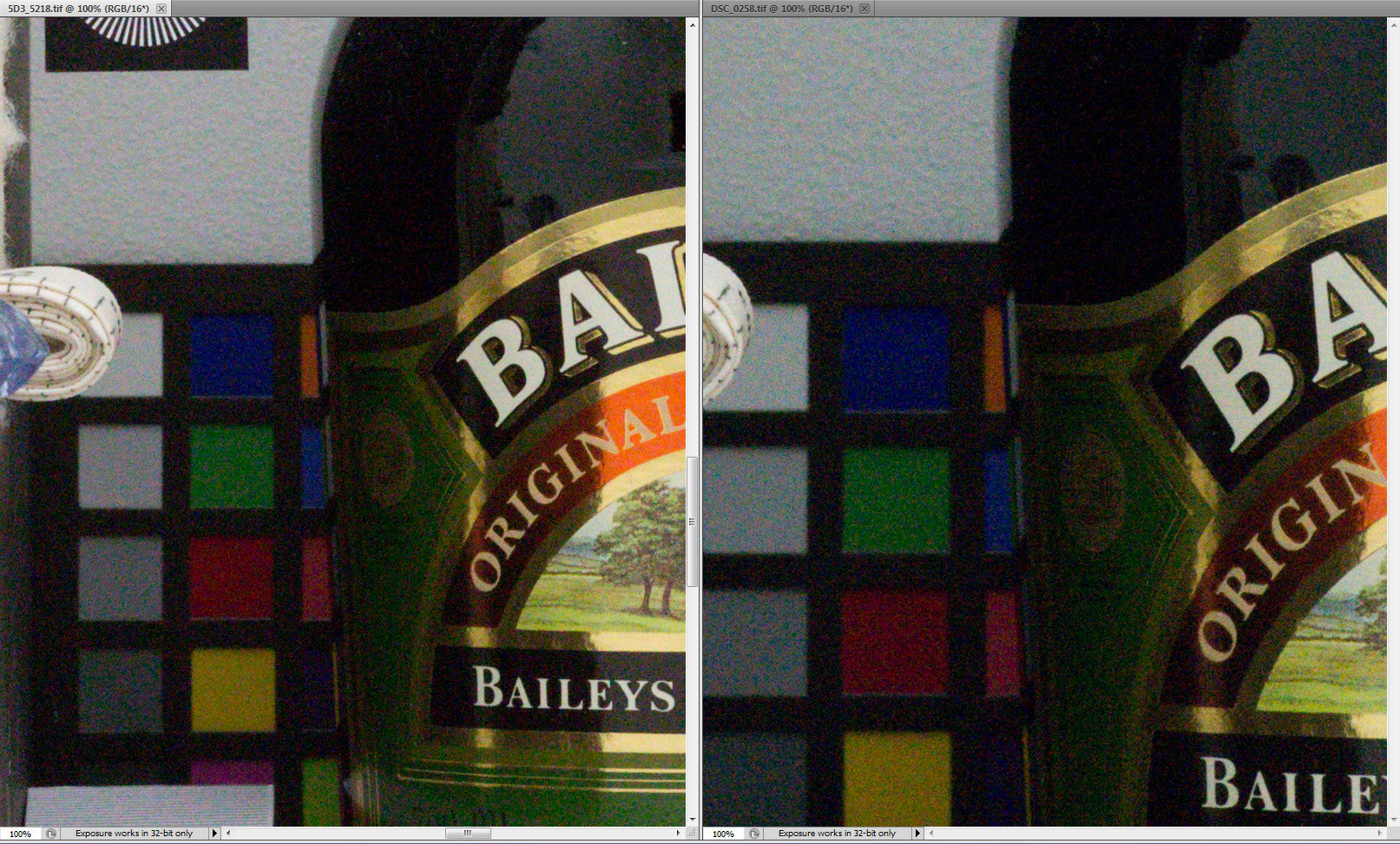
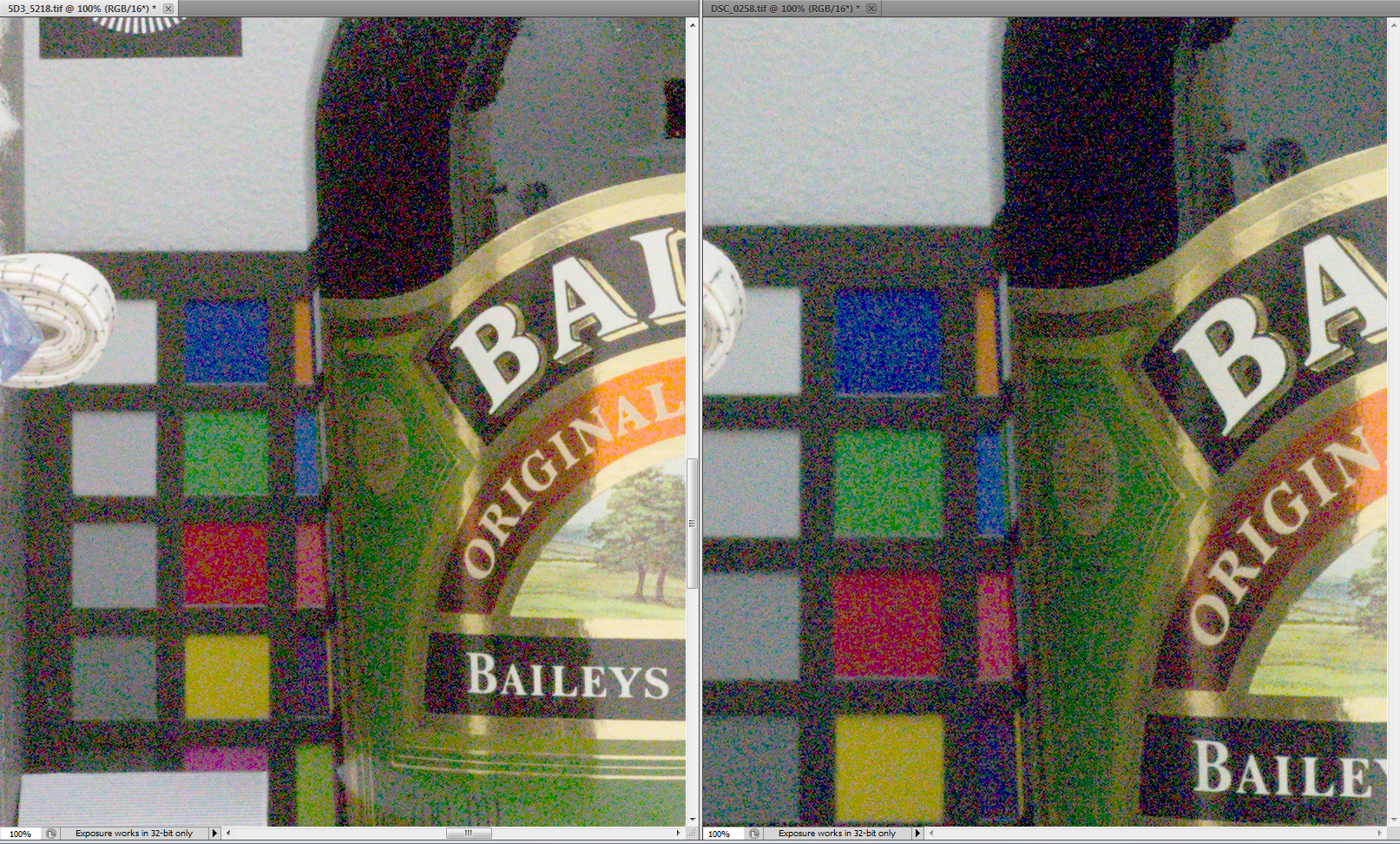


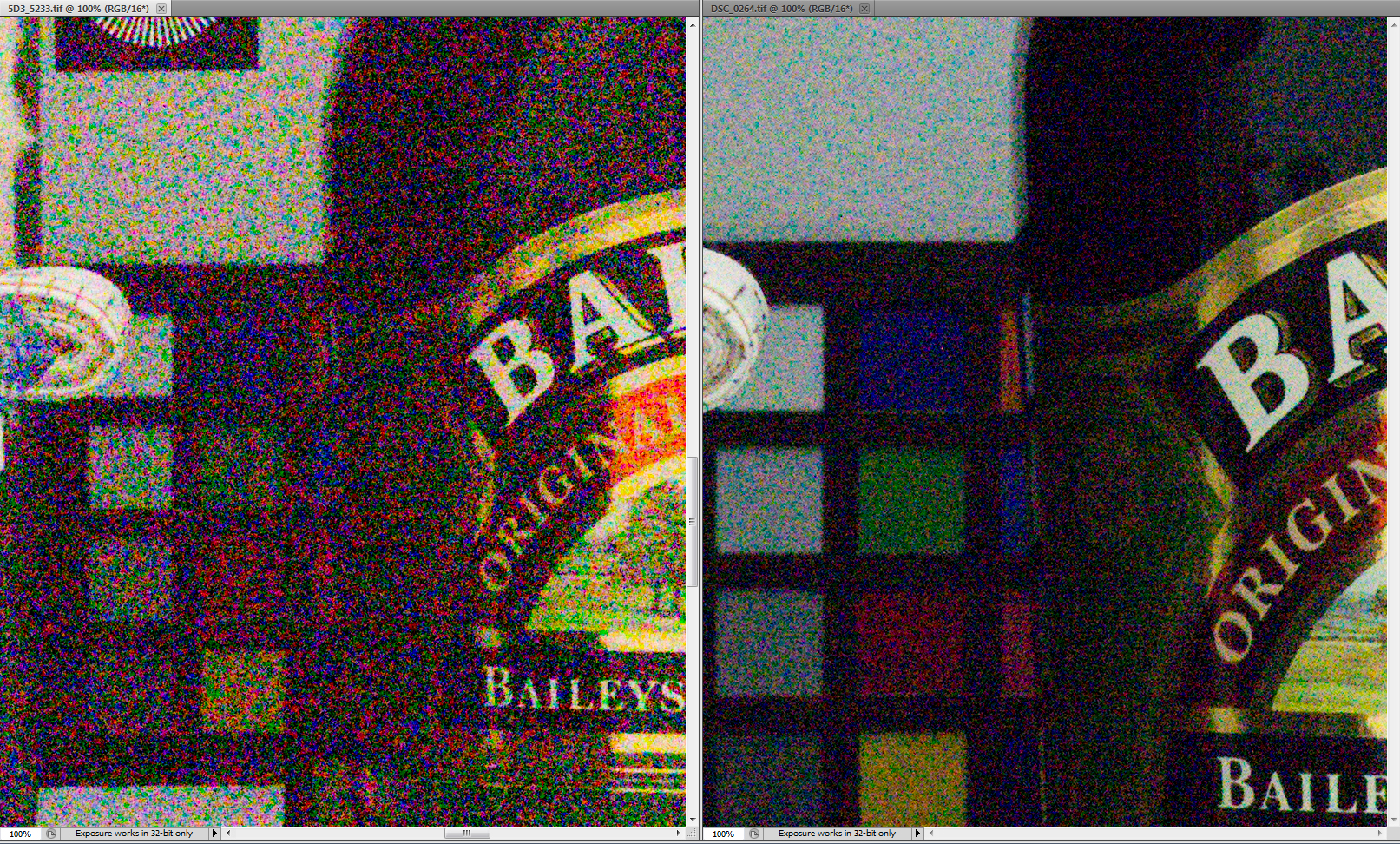
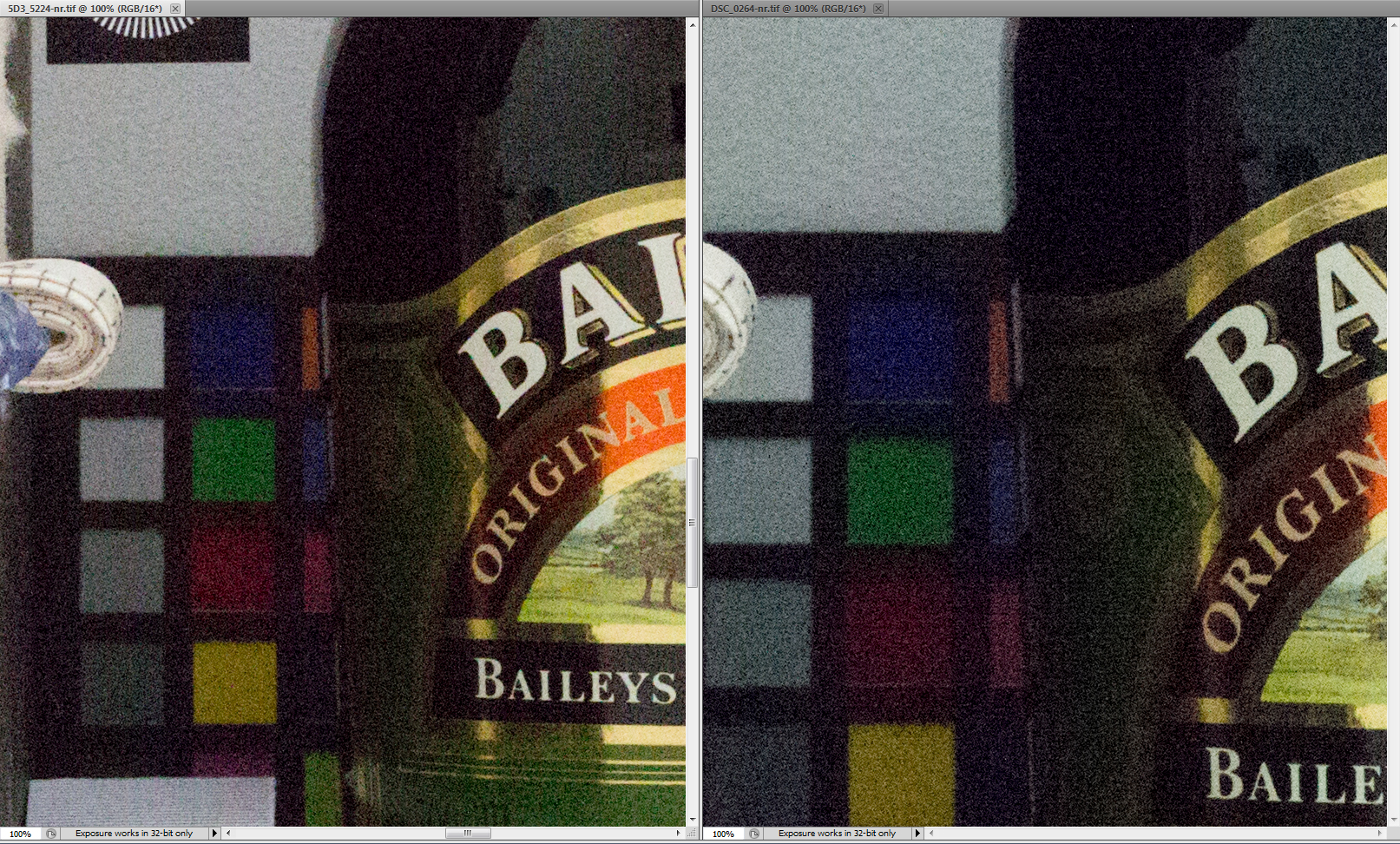
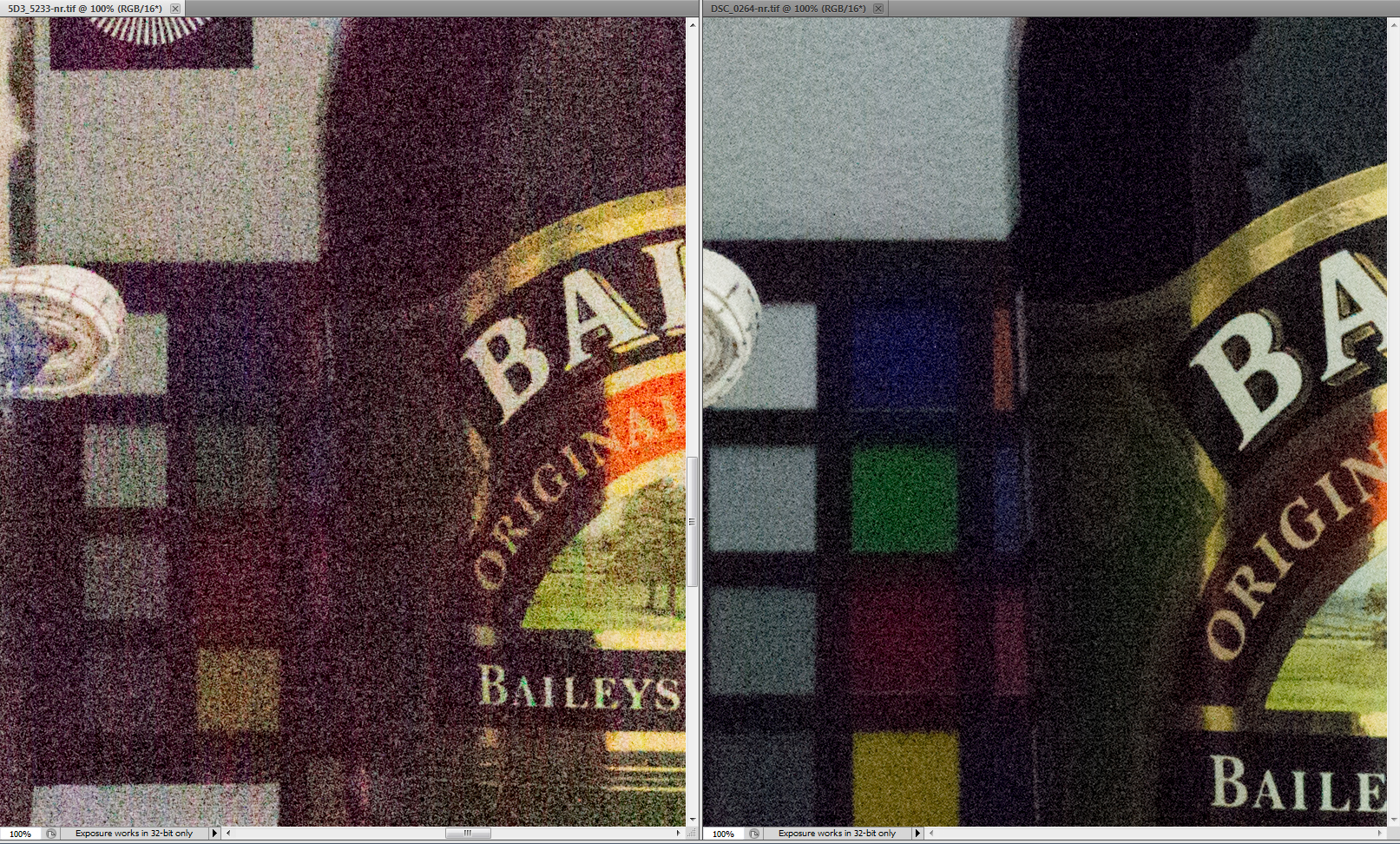

No comments:
Post a Comment